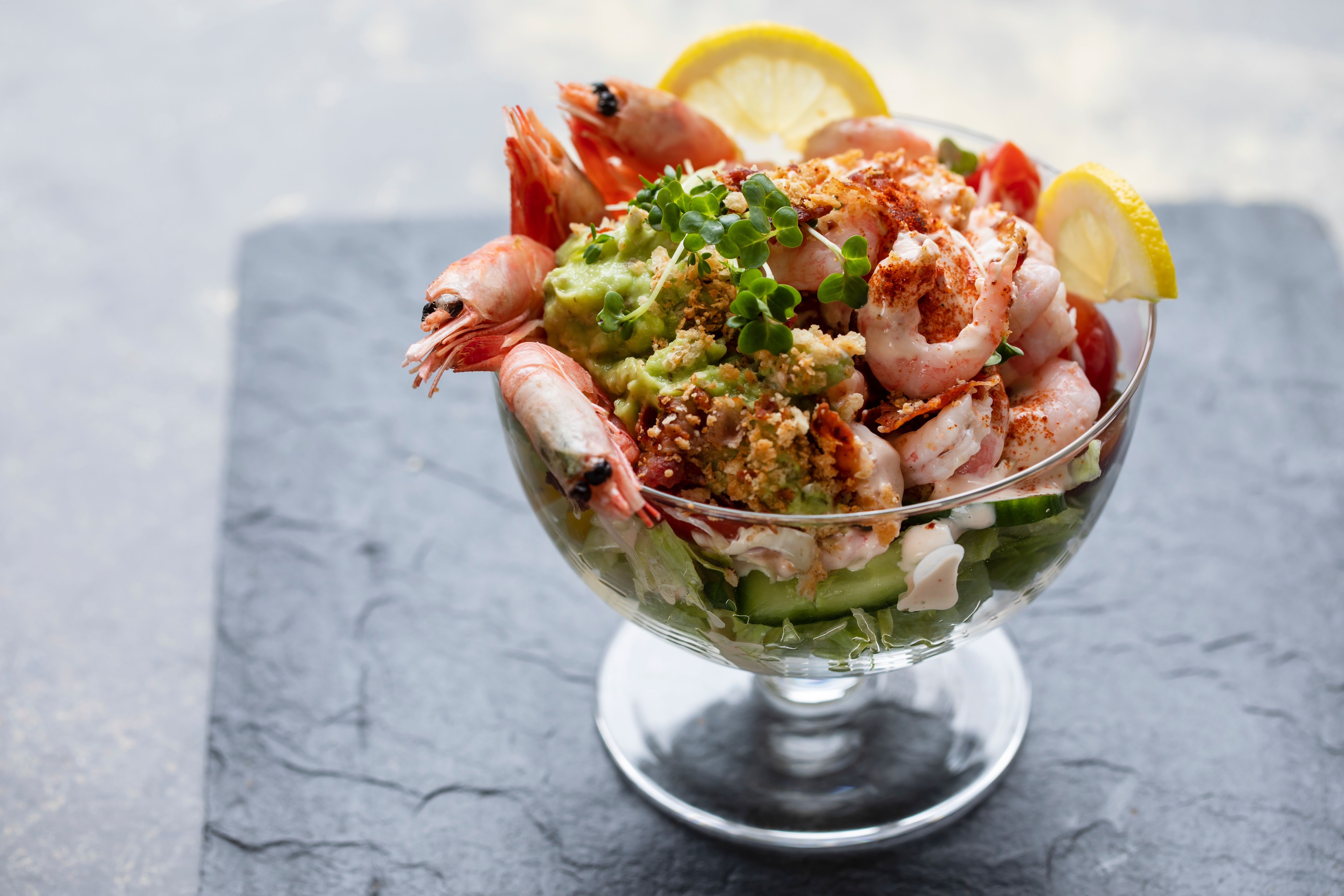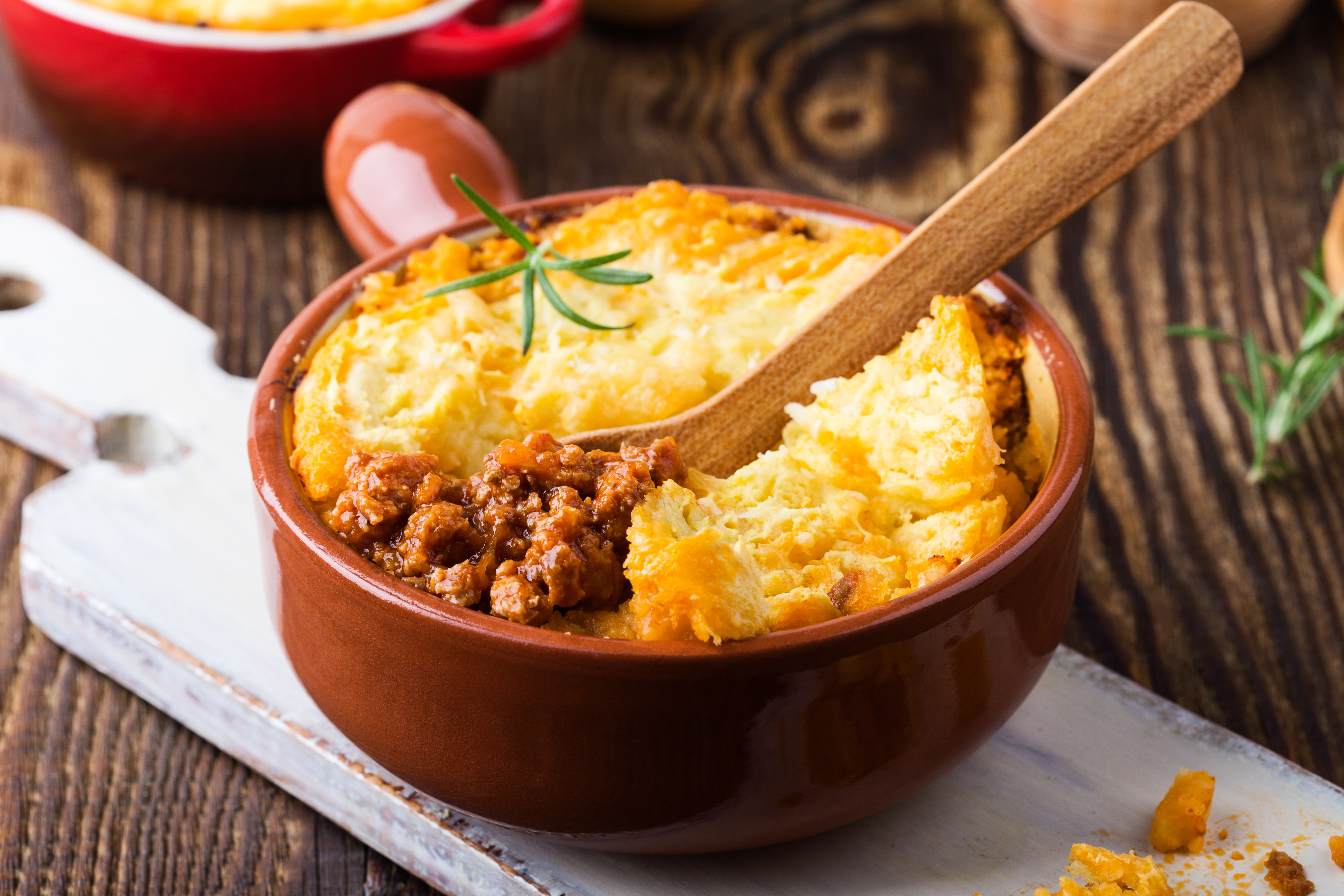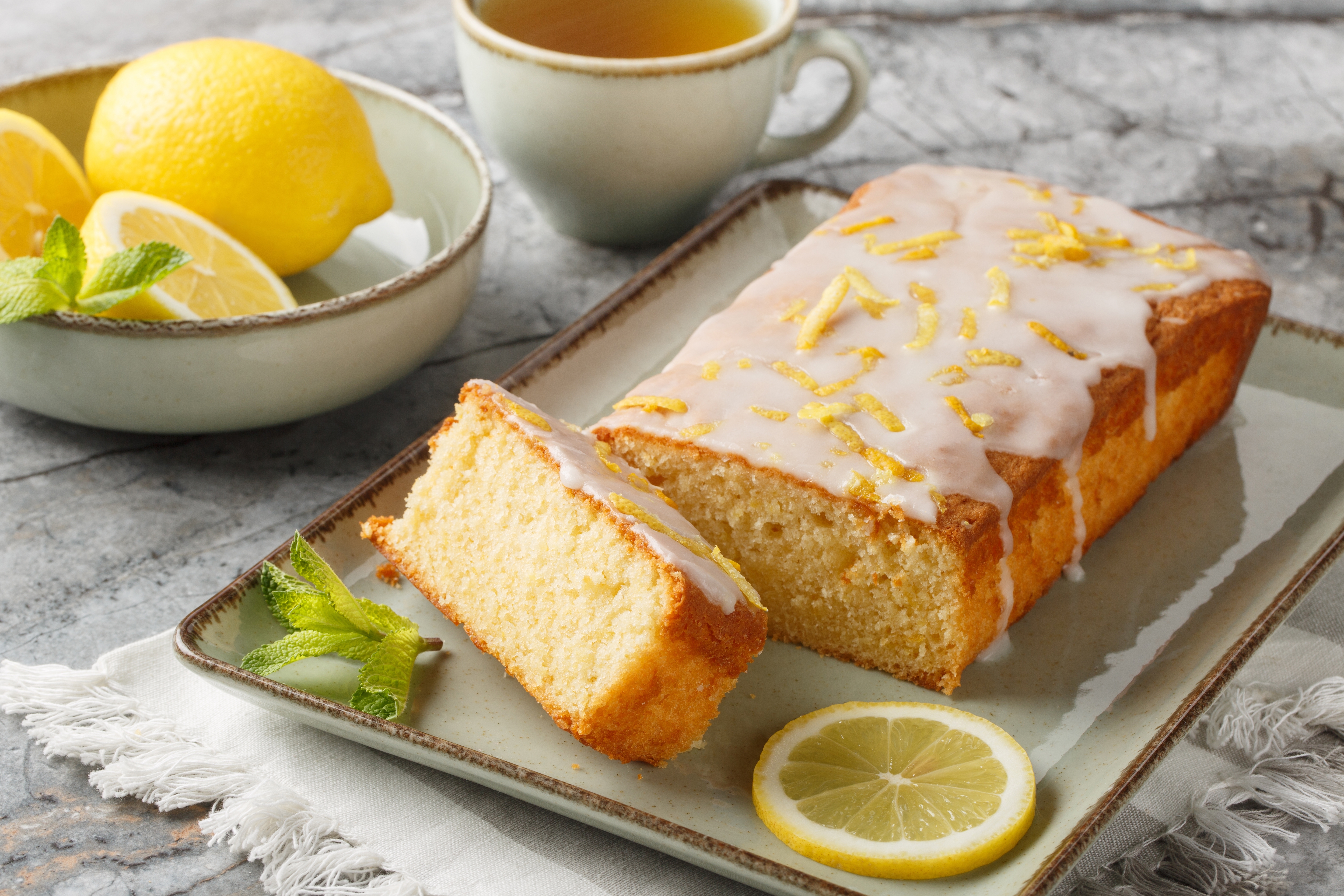Free digital copy
Get Speciality Food magazine delivered to your inbox FREE
Get your free copy
Innovation abounds within the speciality food and drink sector – and there will always be a strong demand for the ‘next big thing’. But what consumers are craving most right now has roots firmly in the past.
Steaming sponge puddings. Cottage pie swirled with mash and doused in lashings of gravy. Dippy egg and soldiers. Lollies and boiled sweets coated in lip-puckering sugar. These are just some of the foods resonating with a British public that seeks comfort, tradition, and the warming cloak of nostalgia.
Supermarket giant ASDA was one of the first retailers to cotton on to the longing for all things ‘retro’ in 2023, with the trend listed as one to seriously watch in its annual report.
The domino effect from this data has trickled into all parts of the UK’s culinary scene – from delis, food halls, foodservice and farm shops, to pubs, cafes and restaurants.
Top brands are looking to the past as they consider new product development and packaging requirements. Dr Oetker, for example, released a range of Old School Mixes recently. These have, they say, become their top category.

Independent retailer and producer Kelly Peak, of Peak and the Pantry has also launched her own nostalgic recipe kits, including Malted Hot Chocolate, and Campfire Chilli Con Carne.
“Nostalgia in food isn’t just about recreating the past,” Kelly explains. “It’s about rediscovering it in a way that feels fresh and exciting.”
Kelly has noticed a real shift in how people cook and shop for food post-Pandemic. “Consumers are revisiting the comforting dishes they know and love, but they want to elevate them with richer flavours and high-quality ingredients,” she says.
Gabriel Bray, development manager at Good Food Studio, agrees, and says he’s noticed nostalgic food gaining strong momentum in the UK, with many businesses taking old fashioned dishes to the next level by refining their presentation and ingredients.
“A great example is Bangers in Shoreditch, which reimagines the classic ‘greasy spoon’ with a more aesthetic approach and high-quality produce. There’s also a growing consumer preference for the traditional and ‘wholesome’, likely influenced by increased awareness of ultra-processed foods. This shift suggests that the recent nostalgia trend isn’t just about sentimentality – it’s also becoming a marker of quality and authenticity.”
Clays bar in London has fully embraced the public’s desire to eat and drink the past, by crafting menus that remind customers of their childhood – albeit with an upmarket twist. This has led to 25% year on year growth, says operations director Jon Calabrese, who adds that he thinks Millennials are leading the charge on this trend.
“There’s no greater source of comfort than the food we grew up with,” he says. “Beyond that, we live in a world of instant gratification, shaped by social media and the need for quick, effortless decision-making. Nostalgia gives businesses a powerful tool. It taps into childhood memories, making choices easier, while offering a unique experience.”

This resonates with Nico Simeone, founder of Six by Nico. “Nostalgic flavours offer diners an escape from their everyday life, taking them back to simpler moments of joy,” he says. “In a way, it’s like finding a moment of calm in a world that feels unpredictable. Nostalgia in food provides a sense of emotional security, giving guests a taste of happiness, and a connection to better times.”
Simona Tweedie, lead analyst at FMCG Gurus says although the Pandemic has passed, 2025 has its own troubles to navigate – global instability, financial insecurity – and she thinks consumers are prioritising their emotional wellness as a buffer, which is directly influencing food, drink and flavour preferences.
“Two thirds of global consumers surveyed in 2024 said that they seek out small indulgences for self-care purposes at least some of the time,” she says, adding that four in 10 have described turning to comfort food and drink more frequently over the last 12 months.
“Over the next couple of years there will be a high demand for known and trusted flavours,” Simona thinks, adding that traditionally styled packaging, and limited editions of discontinued products are fantastic sales drivers in food and drink. Though, “it’s important to note that nostalgic re-launches must be able to compete with modern offerings from a quality perspective.
“Whilst there are many opportunities for heritage brands to refer to their history and re-engage consumers through nostalgia, this trend also offers opportunities for new brands,” she continues. “Classic flavours and retro branding will evoke fun, and feelings of connecting with simpler times, even if the design or the brand itself is completely new.”
It’s all about storytelling, adds Nico. “People are craving dining experiences that spark joy, provoke conversations and foster emotional connections.”
“Timeless, crowd-pleasing flavours will always have a place on any menu,” says Jon, adding that nostalgia is no longer about just pie and mash or a Sunday roast, it’s more considered, bringing in global influences, interpreted through modern techniques and local sourcing.

It’s an easy win, thinks Kelly. “It’s driving premium purchases,” she says. “Consumers are willing to pay more for better versions of nostalgic favourites.” Kelly also believes nostalgic products help foster emotional connections with customers, encourage repeat purchases (“once people discover a product or recipe that enhances a familiar dish, they come back for more”) and are pivotal for creating engaging social media stories and in-store marketing.
Speaking as a Millennial, and one of the key target audiences for this trend, Jon thinks his demographic is in its time of prosperity, driving forward, while looking back. “The next generation will likely do the same in their own way when their time comes.
“What remains constant is the pursuit of excellence. The best operators don’t just follow trends, they elevate them. By sourcing the finest ingredients, using the best techniques and delivering exceptional experiences, they ensure that nostalgia isn’t just a fleeting moment, but a foundation for something timeless.”
Those Speciality Food readers old enough to remember school tuck shops will likely recall them with rose-tinted spectacles - the thrill of penny chews and rustling paper bags of sherbet, pear drops and toffee bon bons.
Old fashioned sweet shops paying homage to yesteryear remain incredibly popular, and retailers say customers are instinctively drawn towards candy displays with a retro vibe.
Two British businesses seeking to ride the wave of good feeling for traditional confectionery are Fudge Kitchen and Cottage Delight, which have both made significant investment in this space within the last few months.
“We’ve noticed you could have a billion different flavours and different formats coming out of the kitchen every single day, but what people really want to see is good quality ingredients, and tradition,” says Fudge Kitchen CEO, Richard Parson. “We make new flavours of fudge, for example, but people always come back to really rich toffees.”
Delivered in striking packaging, the business’s newest line includes two crumbly fudges (Traditional Vanilla and Sea-Salted Caramel), made with a slightly different recipe to the softer slabs prepared and sold in its stores. “It’s a recipe we’ve perfected over time. We’ve been known for our handmade, hand cut, smooth American-style fudge for 40 years, but people often come into the shops and say they’d prefer a crumbly fudge. When we sampled the salted caramel flavour, they told us it’s exactly what they wanted.”
Alongside fudge is Rock Salted Peanut Brittle, boiled in copper pans, poured directly onto marble tables, and hand stretched to just the right thickness before being snapped into individual pieces.
And the range is completed by Vegan Society accredited two-tone Raspberry Coconut Ice, infused with real raspberries.
Already the products have been selling well, with Richard saying they’ve seen considering demand across all four new additions.
Cottage Delight’s recent acquisitions within the confectionery world have enabled the business to grow and offer more nostalgic delights to its customers.
This includes the purchase last year of Fosters Foods, bringing in their Treat Co lines, and becoming a distributor (through wholesale) of Charles Butler – whose sweets (from chocolate limes to liquorice and blackcurrant) - are made using handmade secrets and recipes passed down the family.
Cottage Delight is in an ideal position to bring these products to a wider audience, being a trusted partner for many retailers in the speciality sector, says trade marketing lead, Nicki Wedgewood. “We’ve got 50 years of history behind us. That history is what people look for, and what keeps them coming back,” she explains. “We’ve got a very loyal following, and I think that ‘trust appeal’ really matters. As a brand, from a Cottage Delight perspective, people know they’re getting the best.”
Talking about the expansion into traditional sweets, Nicki says Cottage Delight knows that historically confectionery tends to weather a poor political climate well. “It’s considered a small luxury,” she explains. “People are more inclined to reward themselves with a little treat, and that’s so prevalent now. There’s been a slight shift within confectionery production to create items at the right price point and style to fit in a hamper, be given as a small token gift, or as a gift someone could give themselves.”
The most popular items within Treat Co right now, Nicki says, certainly fit the nostalgic bill, including peanut brittle, clotted cream fudge bars, and cherry nougat, while sales of giant share bags and filled sweetie jars see growth too.
“One of our bestselling ranges is the chocolate-covered honeycomb. We had milk chocolate and white chocolate but we’ve now brought in salted caramel too, pushing that flavour profile a bit, so we’re keeping that thread of nostalgia people like, and bringing it up to date.”
As for where this space is going, the brand is delighting younger (and young at heart) customers with its Unicorn mix, blending chocolate jazzies and marshmallows, and anything with a sour profile is selling well.
“Bon bons, pear drops, jelly babies and dolly mixtures do so well for our retailers. They’re things customers actively look for, especially in the independent sector because they’re things you can’t necessarily find in a supermarket, and because they’re elevated versions with a more special feel to them.”
With more than two dozen varieties available in the Treat Co range, there’s something for everyone, Nicki says, adding that Cottage Delight has introduced free of charge, scallop-edged retail stands, with a traditional Victorian feel, for retailers, to help them showcase these joyful, colourful products in a way that directly appeals to shoppers.